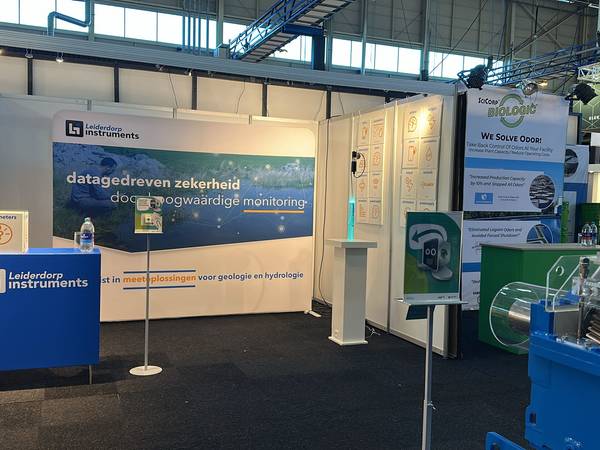Fewer visitors, more intention
The first thing I noticed was how much quieter it was compared to previous years. Those who did attend were very focused — they knew exactly which companies they wanted to visit, which is a good thing. But the casual, spontaneous conversations were largely missing. That may have had something to do with our location in the hall, but I also felt the layout of the fair was more spread out this year. Where similar sectors were once placed closely together, this edition felt a bit more fragmented.
Still, there were some valuable moments. We had great conversations with several of our long-time partners and suppliers — including Huba, Kiwa, and our SIM card provider. That gave us space to dive deeper into collaboration and client challenges, which I really appreciate.
From fieldwork to data quality
What became clear in conversations with visitors is how much the focus is shifting. Where the field technician used to be central, the data specialist is now taking the lead. Monitoring is no longer just about collecting data.
It’s about making sure that data is available, reliable, and secure. The standard is shifting. Where 95% data coverage used to be fine, today 99% is the minimum. Data security is becoming more critical as well.
That’s why we focus on what we do best: making sure field data ends up in the customer’s digital environment in a way that’s accurate, safe and up-to-date. Our customers often manage that digital environment themselves — and our job is to connect with it.
What questions didn't get asked?
One thing that stood out this year was the lack of technical questions. Normally we’d have plenty of discussions about expanding monitoring networks, new applications, or different parameters. But this year, those conversations just didn’t happen.
Even the Water Framework Directive, which will require qualitative water measurements starting in 2027, barely came up — even though the deadline is getting closer. That makes me wonder. Are we as a sector just not ready yet? Are organisations waiting until they’re forced to act? Or was this simply not the right fair for those kinds of conversations? One company did bring it up — they’re preparing a market consultation. But even there, no methodology has been firmly chosen yet.
Are we still in the right place?
Aqua Nederland 2025 made me think. Are we still in the right place as a company? Maybe it’s time to consider a different kind of event, like InfraTech in Rotterdam. That’s where we’d find our end users: governments, water boards, provinces, major contractors, and geological consultants.
That’s where conversations happen about dike reinforcements, coastal management, and civil engineering — the exact themes where we can add value.
But if those people are already there, would we really add value with our own booth? Or would we achieve more by simply attending and having targeted conversations? I’m also thinking about the potential of teaming up with other companies — partners or distributors — and presenting ourselves together.
That could help with visibility and appeal. Because let’s face it: having a great solution isn’t enough. You need to be in the right place to have the right conversations.
The data revolution is coming - ready or not
If there’s one thing I want to leave you with, it’s this:
We’re standing at the beginning of a data revolution. Not just in terms of what we measure — but especially how we handle that data.
Things are moving fast. Which is exactly why we should be talking now: About expectations, decisions, and the future of your monitoring network. Involve us early. We’re happy to think along, not just once the project is underway, but especially before it starts. That’s where the real progress is made.

